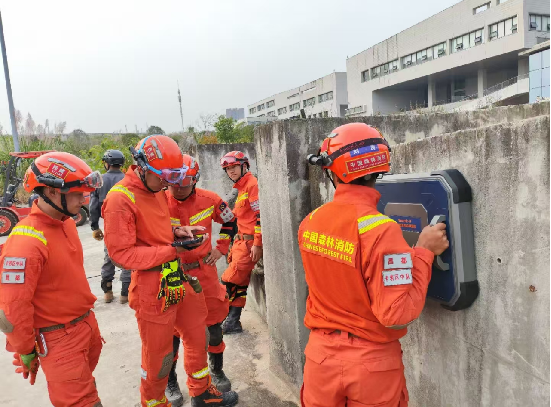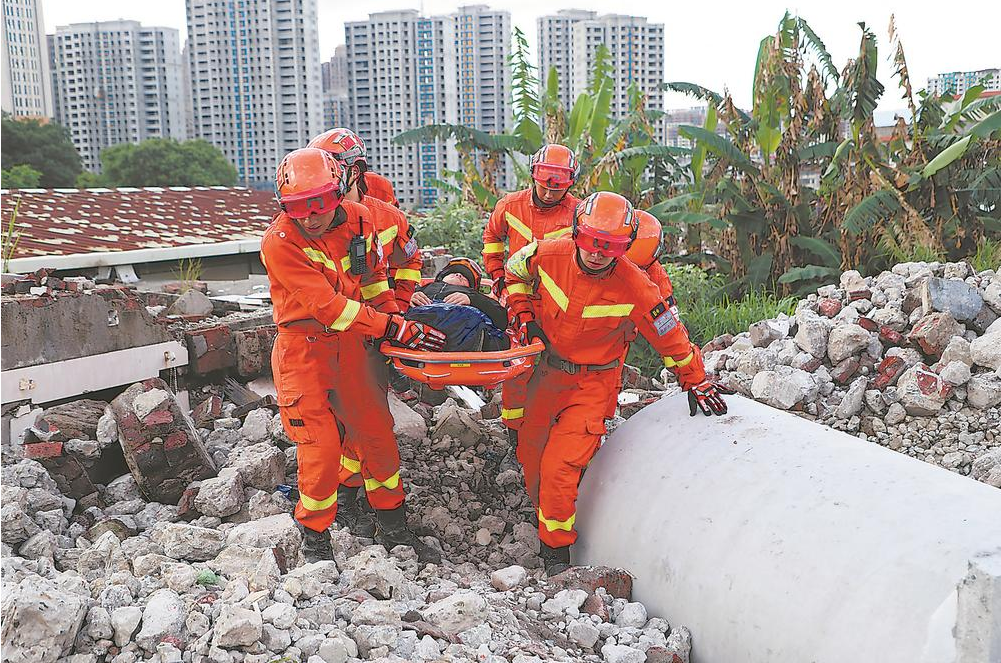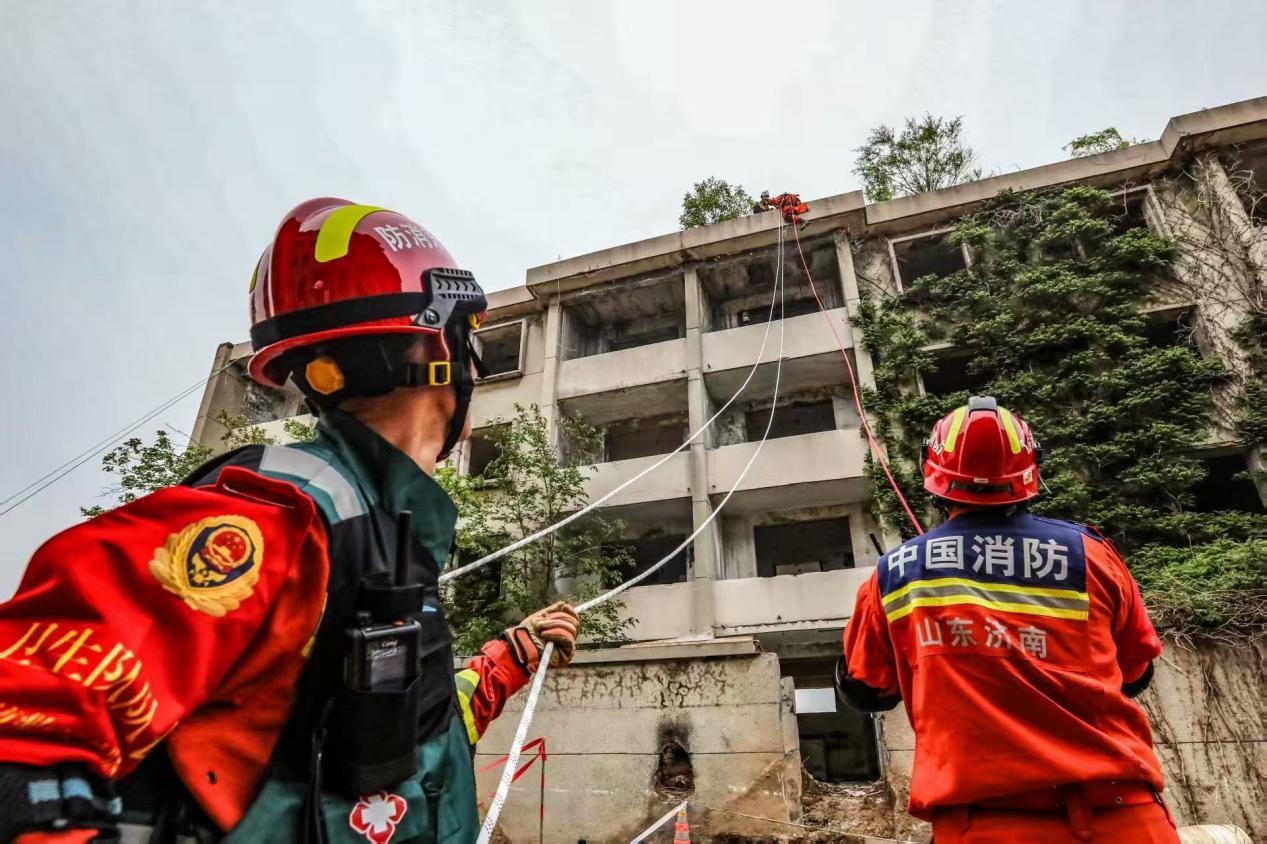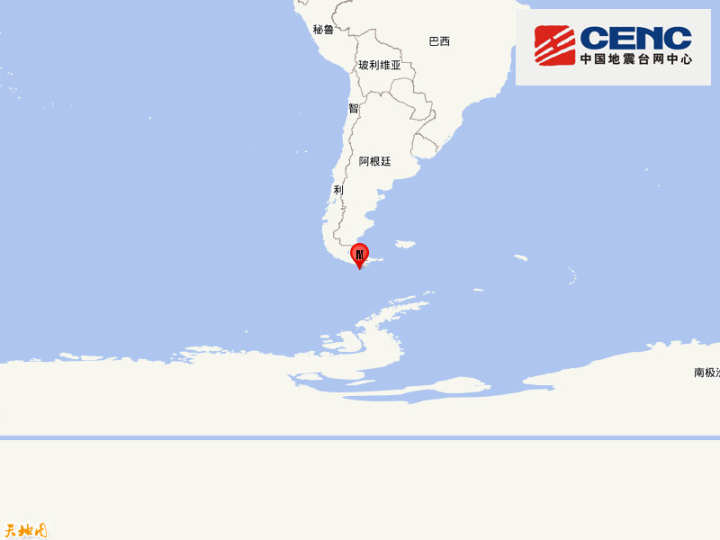
Contact Information
Phone:86 010-51284966
Phone:86 18518110097
E-mail:bjsbl_sale@163.com
Address: Room 403, Building B, Xinhua International Center, Huaxiang, Fengtai District, Beijing
Earthquake rescue technology rewrites "race against time"
2025-04-18
Earthquake rescue technology rewrites the "race against time"
Earthquakes are devastating natural disasters that cause severe immediate and secondary damage, making rescue efforts challenging. Various technological methods can improve rescue efficiency, with rescue equipment developing towards portability, integration, and intelligence, helping rescuers race against death.
Life detection methods for searching survivors
"Is anyone in there? Knock on something to make a sound!" This is a common scenario for rescuers searching for survivors after an earthquake. However, not every survivor's response can be heard by the human ear, which is when technology is needed.
Information provided by the Beijing Blue Sky Rescue Team shows that finding survivors in rubble requires using appropriate life detectors based on the scale and scene of the debris, which is also an internationally accepted earthquake rescue method. Commonly used life detectors are mainly divided into video, audio, and radar types.
Video life detectors, also known as "snake eyes," typically use a soft line or probe connected to a control system to reach deep into confined spaces. Some "snake eyes" also have fill light, infrared, and intercom functions.
Audio life detectors are equipped with audio acquisition probes to detect signs of life by collecting sound waves or vibrations inside buildings. They are generally used in quieter environments.
Radar life detectors can detect signs of life by using electromagnetic waves to penetrate non-metallic obstacles. Early versions used single-dimensional radar, only able to determine the presence of life; currently, rescue operations mostly use two-dimensional radar, which displays a two-dimensional image to show the trapped person's location, posture, and other information.

With the development of artificial intelligence and satellite technology, the technological content of life detectors has also been continuously upgraded in recent years: ReconRobotics, an American robotics company, has developed throwable micro-robots capable of exploring complex environments; during the 2023 Turkish earthquake, rescuers used advanced signal processing techniques and algorithms to reduce the false positive rate of life detectors.

Demolition and shoring equipment for opening rescue passages
"Earthquakes don't kill people, buildings kill people" is a common expression in the international disaster prevention field. The United States Geological Survey website shows that the greatest hazard of earthquakes is the shaking of man-made structures and natural formations and their contents, leading to collapse and casualties. To open rescue passages in collapsed buildings, demolition equipment must be used.
Tian Ye, deputy director of the Special Disaster Rescue Office of the Beijing Fire and Rescue Corps, said in an interview that large-scale demolition equipment includes bulldozers and excavators used in construction engineering, as well as rock drills for breaking concrete, concrete core drills for conveying instruments to the survey site, and smaller equipment includes angle grinders for removing door frames and wires, hydraulic shears for cutting steel bars, and impact hammers that integrate concrete demolition and drilling functions in confined spaces.
Tian Ye said that the future development trend of demolition tools is to integrate features such as "small, lightweight, and high-power."
After the rescue passage is opened, shoring tools are also needed to create more safety space for the rescue passage. Traditional jacks are the most commonly used large-scale shoring tools; lightweight hydraulic spreaders can not only cut steel bars and other hard objects but also provide support in reverse; shoring airbags are inflated using gas cylinders and are an excellent choice for small-scale shoring.
The Beijing Blue Sky Rescue Team, which has repeatedly dispatched team members to participate in domestic and international earthquake rescue operations, said that in addition to using mechanical equipment, rescuers will also use wood and other materials on-site to create three-dimensional supports and door and window supports to stabilize and reinforce the rescue passage, preventing secondary collapse during rescue operations.
Communication and positioning support to connect "information islands"
The damage to infrastructure caused by earthquakes can lead to large-scale communication outages that are difficult to restore immediately, turning the disaster area into an "information island" isolated from the outside world. A report released by the United Nations Office for Disaster Risk Reduction shows that the lack of data sharing caused by "information islands" significantly reduces rescue efficiency.
Tian Ye said that restoring communication is one of the first tasks for rescue teams entering the earthquake site. Rescue teams usually set up local wireless communication to ensure voice communication needs among team members; long-distance communication often uses satellite phones such as Iridium, and maritime satellite terminals can also be set up to achieve video communication.
Rescue teams usually equip all members with satellite positioning devices, using satellite positioning systems such as Beidou and GPS to understand the distribution of team members in a large-scale field; after team members enter the interior of the ruins, the rescue team can use inertial navigation positioning tracking to simulate and restore their travel routes.
With technological advancements, some rescue teams use portable base stations, drones, or balloons carrying airborne base stations to achieve signal coverage. Base stations can not only ensure rescue communication needs but also allow survivors' mobile phones to restore signals, thereby improving rescue efficiency through signal positioning and other methods.
"Machine replacement" of intelligent equipment
The terrain at earthquake sites is complex, and some rescue areas are even difficult to access. The "machine replacement" method saves rescuers a lot of energy and time, and intelligent unmanned equipment has also become a development direction for earthquake rescue technology.
Quadrupedal robots can carry life detectors and other equipment to enter the ruins to search for survivors, greatly expanding the detection range; drones, in addition to delivering medicines and food, can also provide emergency lighting, carry life detectors, and airborne base stations, and many solutions have been successfully implemented in rescue operations.
Intelligent equipment is also expected to completely replace humans in rescue operations in dangerous environments. The robots from China's Unitree Robotics have achieved fully human-like natural walking; the new version of the Atlas robot from Boston Dynamics in the US has achieved flexible handling of parts between different storage cabinets in a factory, and the company has also developed robot dogs suitable for search and rescue in various disaster scenarios... In recent years, embodied intelligence technology, which gives robots multi-modal perception capabilities, has developed rapidly, and is expected to open up more application scenarios for "machine replacement" in earthquake rescue in the future.
Source: People's Net - People's Daily Overseas Edition









